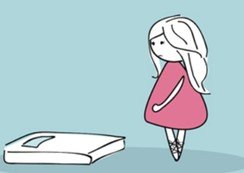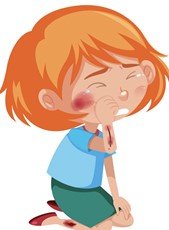
Complications from Athletic Amenorrhea in Powerlifting
Powerlifting 4 Women
New Series of Four Articles on Athletic Amenorrhea
The Dangers and Complications of Athletic Amenorrhea, or menstrual inconsistency, are especially prominent in any weight-based sport, including powerlifting, weightlifting, bodybuilding, and boxing. Weight manipulation, even when done under the guidance of a nutrition professional, can result in this condition.
Athletic amenorrhoea can be caused by a range of factors related to over-exercising and weight manipulation, which include the following:
- Low levels of body fat – the female body cannot menstruate below a certain percentage of body fat (many male coaches don’t actually understand this and push female athletes into striving for unhealthy body fat levels).
- Exercise-related hormones – exercising makes the body release certain hormones, such as beta-endorphins and catecholamines. High levels of these hormones are thought to affect how oestrogen and progesterone work.
- Emotional stress – strong, negative emotions can affect the hypothalamus as can stress in training and dieting with balancing life.
- Disordered eating – which in this case includes crash dieting and skipping meals trying to make weight for a competition.
 A risk directly related to athletic amenorrhea is musculoskeletal injury, particularly in the latter stages of a comp prep when the load is getting heavier and the body is breaking down more. Research done in the US has stated that, athletes who reported menstrual inconsistency sustained a higher percentage of severe injuries when taking part in high-level sports than athletes who did not suffer such inconsistency due to their weight cuts.
A risk directly related to athletic amenorrhea is musculoskeletal injury, particularly in the latter stages of a comp prep when the load is getting heavier and the body is breaking down more. Research done in the US has stated that, athletes who reported menstrual inconsistency sustained a higher percentage of severe injuries when taking part in high-level sports than athletes who did not suffer such inconsistency due to their weight cuts.

Research has also found that female athletes who take part in weight cuts are 3x more likely to suffer a competition ending injury days out from a competition when they develop athletic anemia.

The long-term complications of untreated athletic amenorrhoea include:
- High levels of blood cholesterol –caused by an oestrogen-related fall in the ratio of good cholesterol (high-density lipoprotein or HDL) to bad cholesterol (low-density lipoprotein or LDL).
- Loss of bone density – this may cause osteopenia (low bone density, but not low enough to be osteoporosis) or osteoporosis (brittle bones that break easily), especially if peak bone density has not yet been reached because of age.
- Premature aging – the skin loses its flexibility because of low levels of oestrogen
That’s why it is key that coaches understand the whole process of weight cutting, and that female lifters are different than male lifters, particularly when it comes to weight cuts.
Treatment options for athletic amenorrhoea depend on the person, but these can include:

- Exercising less often or choosing sports that are not as intense.
- Putting on two or three kilograms of body fat.
- Starting the combined oral contraceptive pill or hormone therapy if dietary changes and reduced exercise do not result in regular menstruation returning.
- Making dietary changes such as increasing calcium and daily kilojoules.
- Taking calcium supplements to increase bone strength and prevent osteoporosis.
- Seeking counselling if an eating disorder is an issue.
About our Expert: Who is Hannah Altman?
Hannah Josepha Rachel Altman
Director Infinite Strength & Rehabilitation
BHS| BCOM|MPHIL
Precision Nutrition Qualified Sports Nutritionist & Elemental Nutrition Institute
Qualified Body Transformation Specialist and Blood Analyst
Qualified Powerlifting Coach and Referee
3X PA National Record Holder Top 20 Women’s Lifter PA 2019, 2020 and 2021 Top 10 Bench 2018, 2019, 2020 and 2021 425kg @ 68kg BW
Get in touch with Hannah Altman
